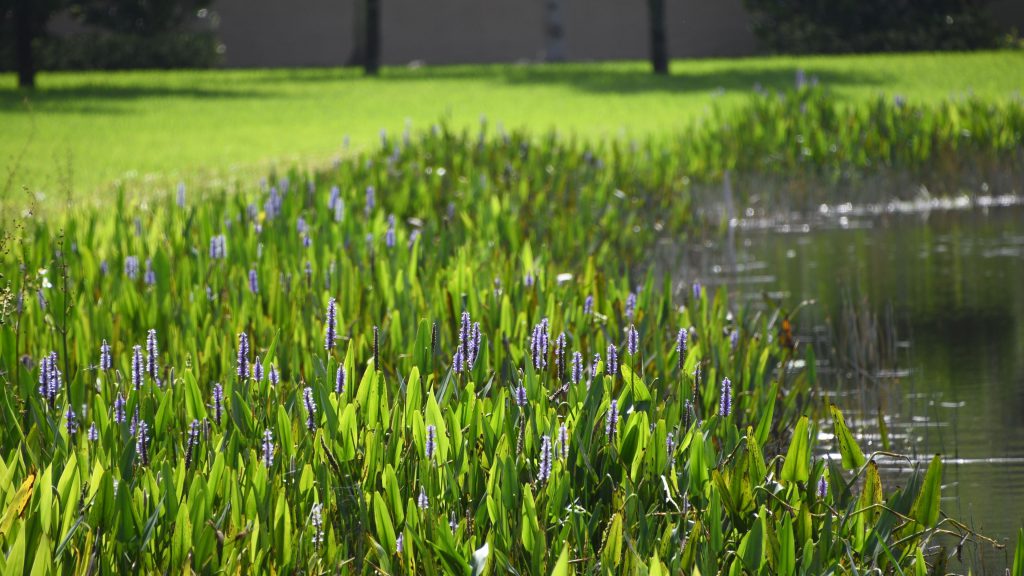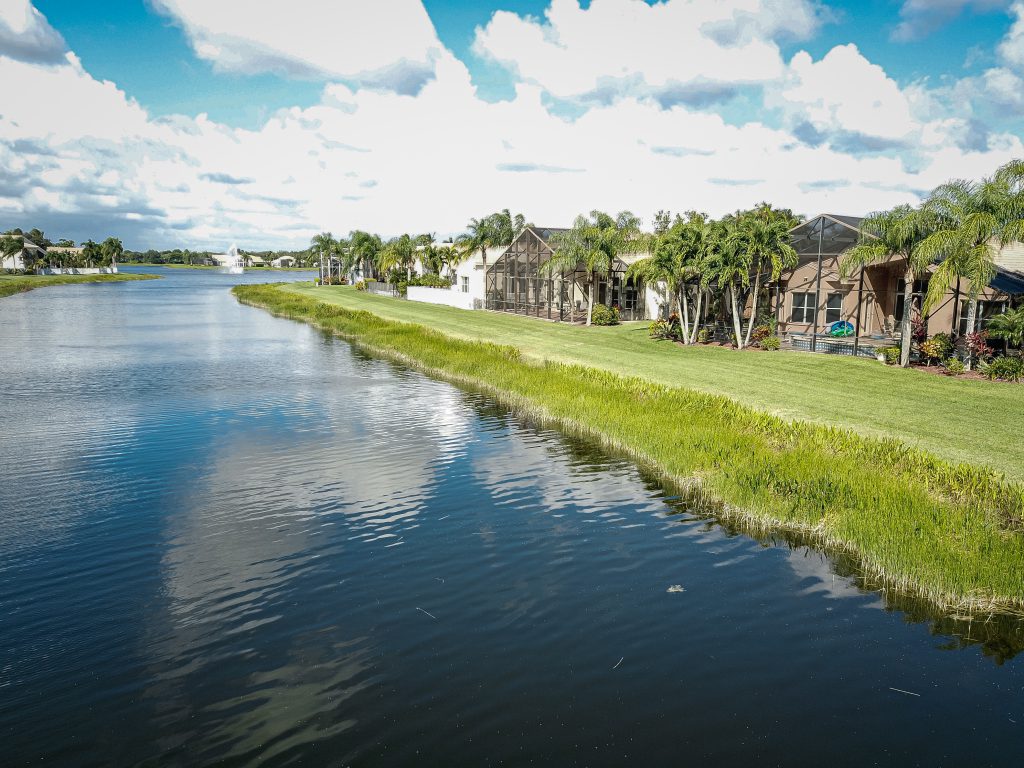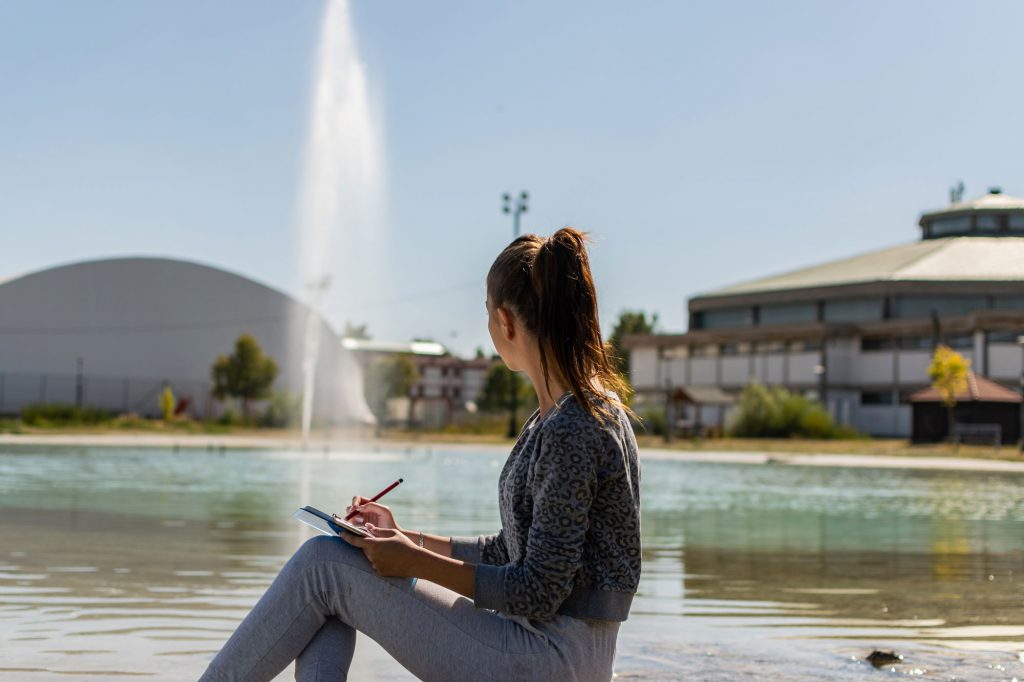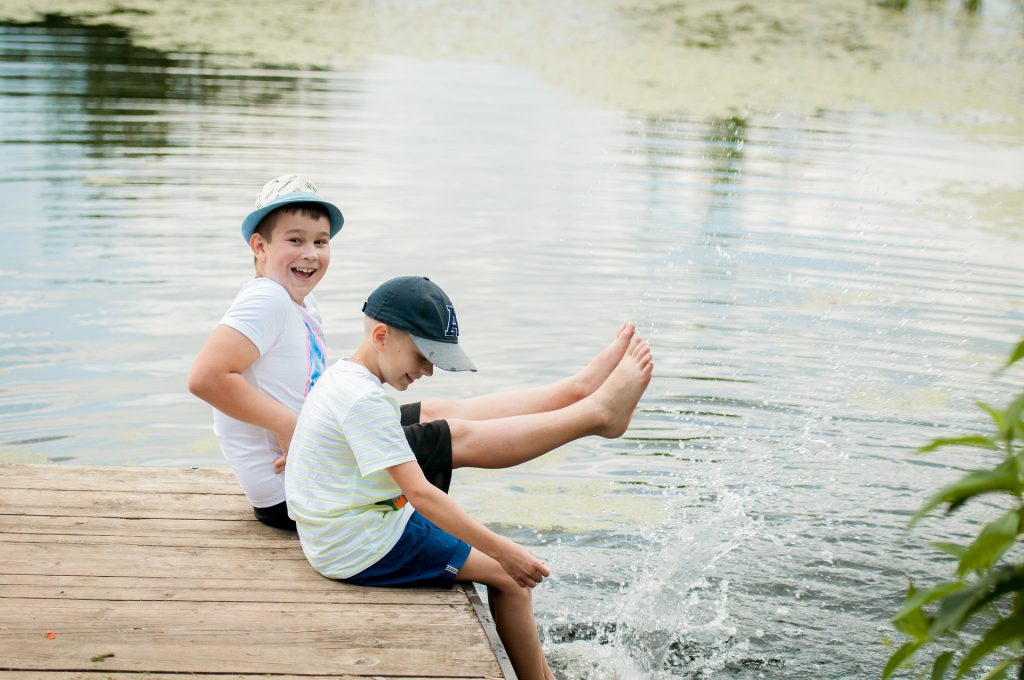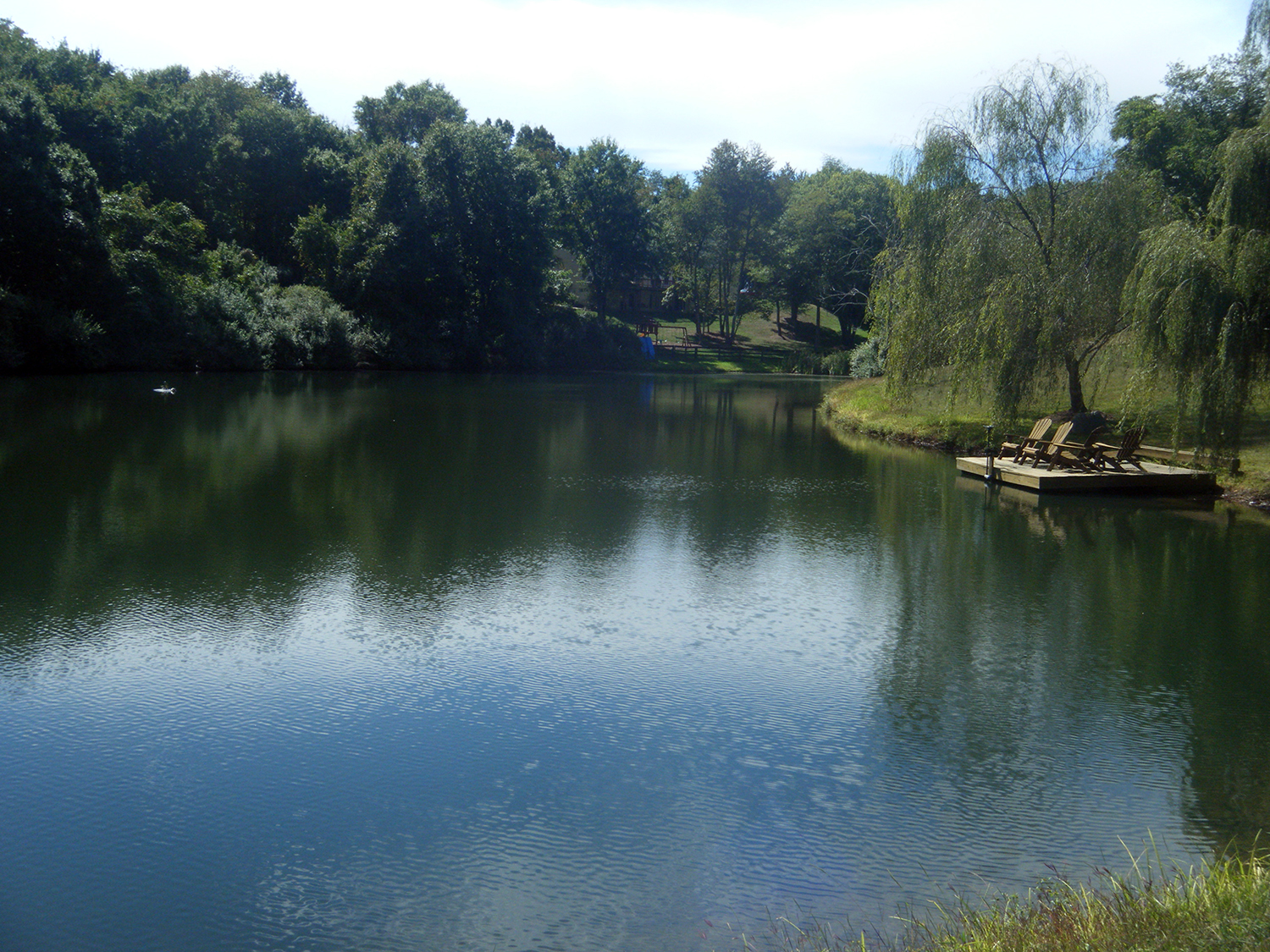
How Do Lakes Differ from Ponds?
Most people think of lakes as large bodies of water suitable for boating, sport fishing, kayaking, and other activities, while ponds are smaller and often found in backyards and serve as a swimming or casual fishing spot. It’s easy to see why this can be confusing—ponds and lakes are both inland waterbodies of varying shapes, sizes, and uses. Ultimately, these characteristics don’t matter when distinguishing a lake from a pond.
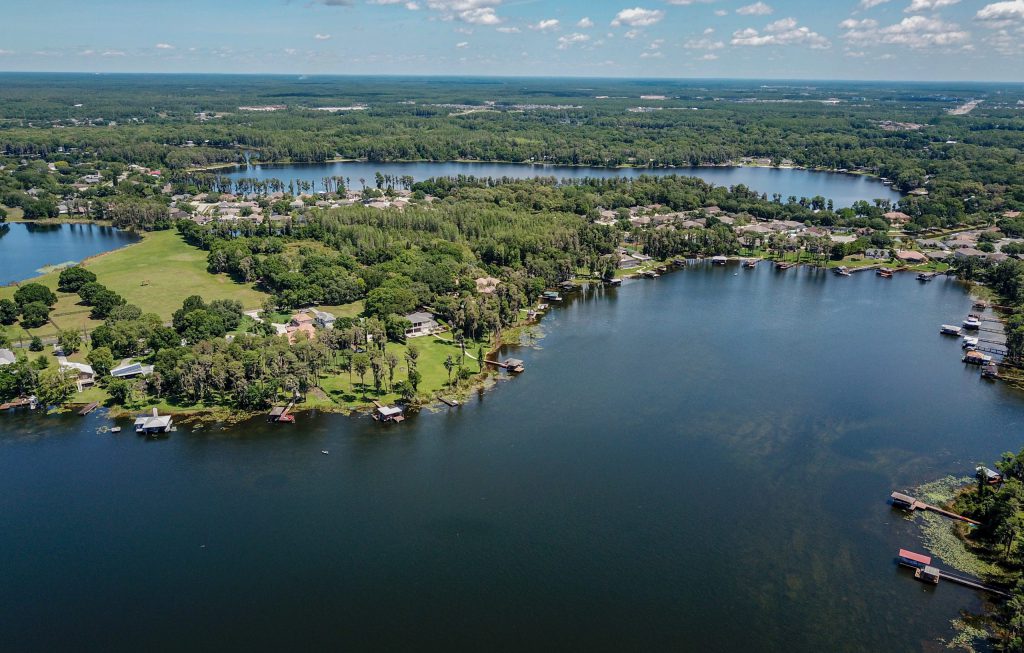
Breaking Down Lake & Pond Characteristics
Scientists sometimes use the total surface area to help classify a waterbody, but the main differentiating factor that determines whether an inland body of water is a lake or a pond is depth. A deeper body of water has a different, more complex environment for aquatic life than a shallow one. As a result, some ponds are actually larger than some lakes!
Ponds are generally shallower, and the entire area of a pond is what scientists call a photic zone, which means that sunlight penetrates through the shallow water all the way to the bottom. In the shallower water found in ponds, the ecosystem is more consistent than that of lakes and may support rooted plants, pond weeds, phytoplankton, and algae.
Lakes are usually much deeper, and sunlight cannot reach the bottom in most places. This is called the aphotic zone, and since no sunlight penetrates to the bottom, no plants, phytoplankton, or algae grow there. This makes the ecosystem of a lake very different from that of ponds, as these aphotic areas are populated solely by carnivorous organisms.
Wave action is another difference between a lake and a pond. The waves in ponds are generally smaller than the waves in lakes where a 12-inch high wave would be considered small. In addition, the water in ponds tends to be the same temperature throughout, while the temperature can vary significantly in the deeper lakes.
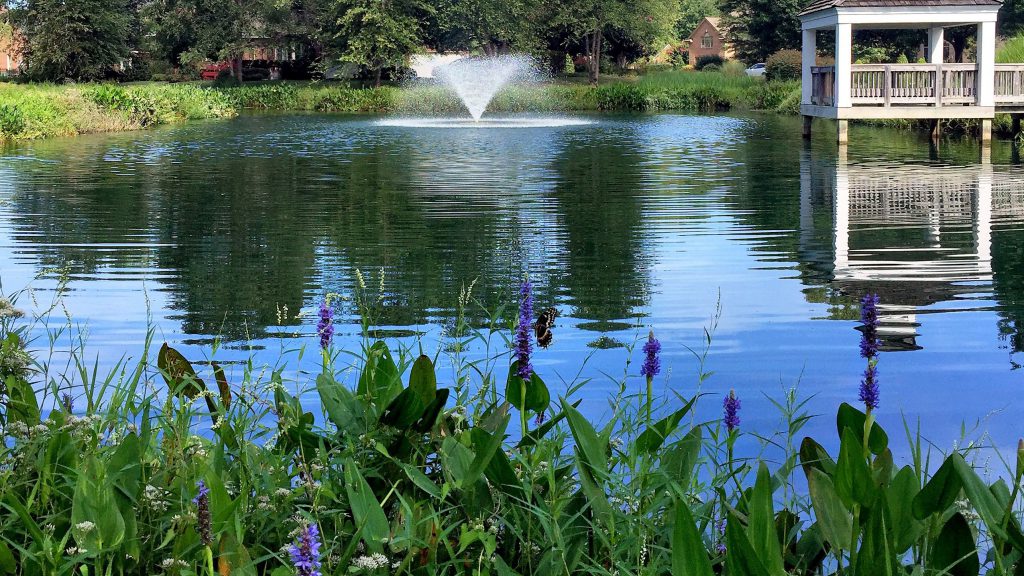
Here’s a quick test to determine if you’re looking at a lake or pond:
- Does sunlight penetrate the entire waterbody?
- Does it have waves that are smaller than 12 inches?
- Is the water temperature uniform throughout?
If the answer to these questions is yes, the waterbody is considered a pond; if the answer is no, it is considered a lake.
What’s in a Name: Ponds vs. Lakes
After asking yourself the questions above, you may experience some confusion. While a waterbody may, by definition, be a pond, it might be referred to by the community as a lake. The simple answer is that it’s arbitrary – long ago, someone chose a term and used it in the name. It’s easy to see why, since most people tend to identify lakes and ponds by their size.
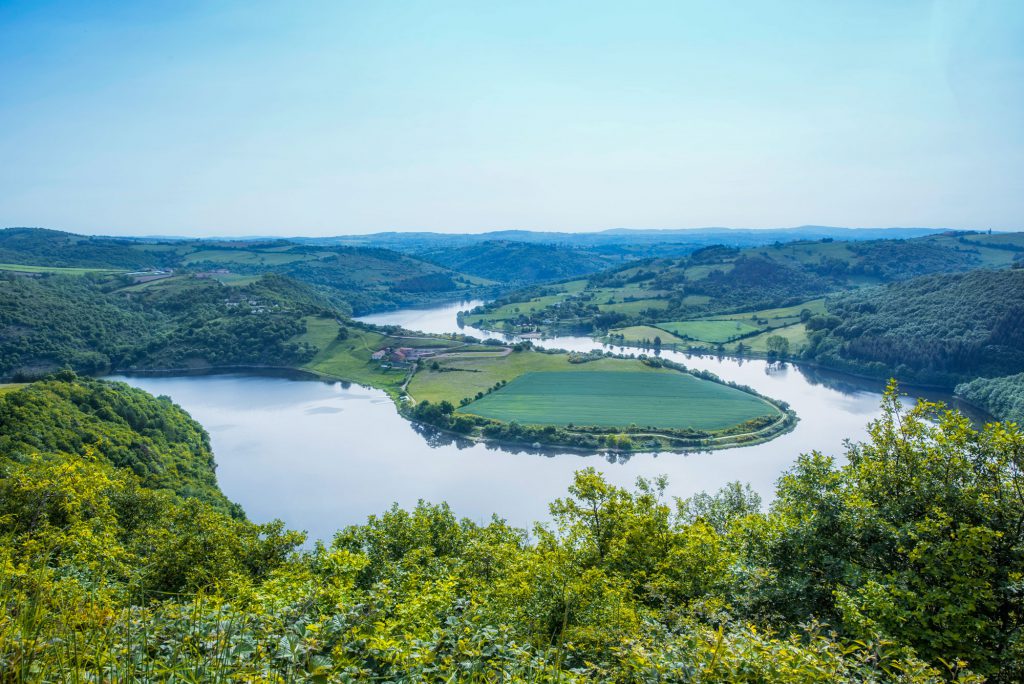
How Lakes Differ from Rivers
Lakes are stationary bodies of water, while rivers are distinguished from lakes by fast-moving currents. While these distinctions seem clear, the differences become more subtle in areas where rivers are wide, and the current is slow in a way that the river may resemble a lake. In addition, a river may form “oxbow lakes” if a portion of the river is geologically separated from the river’s main path over time.
Furthermore, some lakes do move, they just move slowly—so slowly that it can take generations for them to move. Below are some key differences between lakes and rivers.
- Lakes are generally stationary, and rivers are generally fast-moving.
- Lakes are fed by canals, streams, and rivers, while rivers are fed by rain and other precipitation.
- Lakes can be natural or man-made, while rivers are only natural.
- Lakes are inland water bodies surrounded by land, while rivers move along their banks.
- Lakes are generally not associated with the ocean or sea, while rivers run toward the sea, where they empty themselves out.
So, while lakes are large, fairly deep bodies of water, they don’t have currents. Rivers flow constantly and have currents.
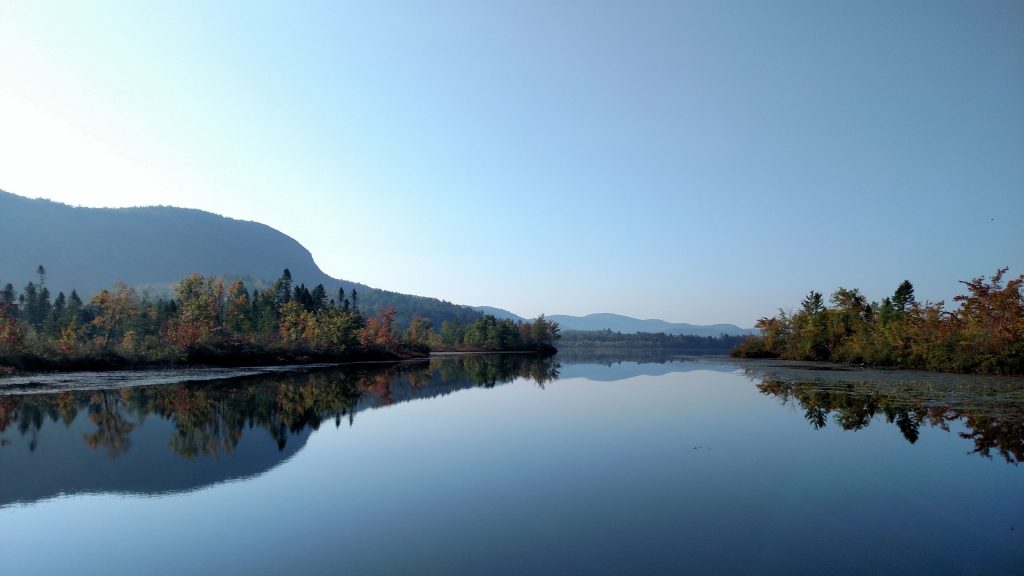
Freshwater Lake vs. Saline Lake
Most of the lakes you’ll see are freshwater lakes, but some lakes are very salty. These lakes are called saline lakes. Though some freshwater lakes do have minute amounts, less than 1-3 g/L, of dissolved salt in them, saline lakes usually contain between 3 and 300 g/L of dissolved salt.
Saline lakes are generally found in dry environments where water only leaves lakes by means of evaporation or by seeping into the ground. As evaporation occurs, salts and other chemicals become concentrated in the water over time.
Although the majority of freshwater rivers and lakes drain into the ocean, saline lakes are created when they are the endpoint of a river’s flow. These lakes are called endorheic or terminal and are often referred to as inland seas. They usually form when they are at the lowest point of the landscape and can be found in basins. These lakes are not that common, which is why most of them are very well-known, such as the Dead Sea in Israel/Jordan, Mono Lake in California, the Great Salt Lake in Utah, and the Caspian Sea in Eurasia.
The Dead Sea was named because it thought that nothing could live in it. Although it is true that no fish live in this saline lake, some bacteria and algae can survive. In contrast, the Great Salt Lake in Utah is an important habitat for many organisms, including brine shrimp and other crustaceans. The shores of some saline lakes also provide valuable breeding territory and habitat for waterfowl and shorebirds.
The Best Way to Keep Lakes Healthy
Lakes and ponds are attractive and valuable features for the communities that surround them. For this reason, it is important to keep them healthy.
Create a Buffer of Native Plants
Creating and maintaining a buffer of native plants is one of the best ways to keep a lake healthy. Shoreline plants create a natural filtration system for the sediment and chemicals found in runoff. They also provide food and shelter to wildlife and fish and can prevent or slow erosion of the shoreline. In addition, shade from shrubs and trees helps keep the lake cool and oxygen-rich while keeping unwanted aquatic plants from taking over. In cases where the natural plant cover around a lake has been damaged or removed, replanting and maintaining a buffer can help improve the health of the lake. Not all trees are beneficial for the shoreline, so be sure to speak with a freshwater management professional to determine the right selection for your lake or pond.
The ideal plant buffer should be 6 feet wide or more and include a variety of native shrubs, trees, and groundcovers. Keeping walkways and pathways narrow will help minimize negative shoreline impacts. A company that specializes in lake management can help develop a plan with native plants that will help keep lakes healthy.
Keep Landscaping Chemicals Out of Lakes
Pesticides and fertilizers may seem like an easy fix for lawns and gardens, but they can create long-term health problems for lakes and ponds. They are often carried by rain and wind right into waterbodies, where they significantly impact aquatic life. Chemical fertilizers, especially ones that contain phosphorus, can stimulate the overgrowth of nuisance plants and algae, including toxic cyanobacteria. Eliminating pesticide use can protect our water resources and make them a healthier environment for wildlife, fish, and people. If pesticides are absolutely necessary, be sure to use organic fertilizers made of composted animal manure, composted food, and garden waste.
The aquatic herbicides that lake management companies use are not the same as those used by landscapers and are safe for use in ponds. All of the aquatic herbicides that are used by lake management companies are evaluated and registered with the Environmental Protection Agency (EPA) for aquatic application to ensure they’re not harmful to the waterway or native wildlife. Likewise, herbicide technologies have come a long way in recent years. Today, lake management companies have access to the latest solutions that are designed to target the unique growth mechanisms of specific invasive plants without impacting native species.
Use Advanced Solutions for Long-Term Success
Reducing pesticide use and establishing a beneficial buffer can go a long way in the protection of lakes and ponds, but they are not the only options. Floating fountains and aeration solutions like submersed aeration can be used to help increase dissolved oxygen levels in waterbodies. Biological bacteria and nutrient remediation products can be used to help improve water quality conditions and reduce the growth of aquatic weeds and algae. Hydro-raking and SOX Solutions can reverse shoreline erosion while increasing water depth and volume.
Achieve Beautiful Water with Annual Management
In addition to these sustainable strategies, lake and pond managers strongly recommend year-long monitoring and maintenance to prevent problems before they appear. As part of a SOL Pro Annual Management program, aquatic specialists will come to your property to complete regular water quality tests, conduct shoreline maintenance, control algae, and weeds, and implement other eco-friendly solutions. Contact us today to begin designing your custom SOL Pro program.
Helping You Achieve Healthy Lakes & Ponds
SOLitude Lake Management is a nationwide environmental firm committed to providing sustainable solutions that improve water quality, enhance beauty and preserve natural resources.
SOLitude’s team of aquatic scientists specializes in the development and execution of customized lake, stormwater pond, wetland and fisheries management programs. Services include water quality testing and restoration, algae and aquatic weed control, installation and maintenance of fountains and aeration systems, shoreline erosion control, muck and sediment removal and invasive species management. SOLitude partners with homeowners associations, golf courses, private landowners, businesses and municipalities. SOLitude Lake Management is part of Rentokil, a leading business services company, operating across the United States, Canada and Puerto Rico.
For more information, visit SOLitude Lake Management at solitudelakemanagement.com, and connect on Facebook, LinkedIn and Twitter.








